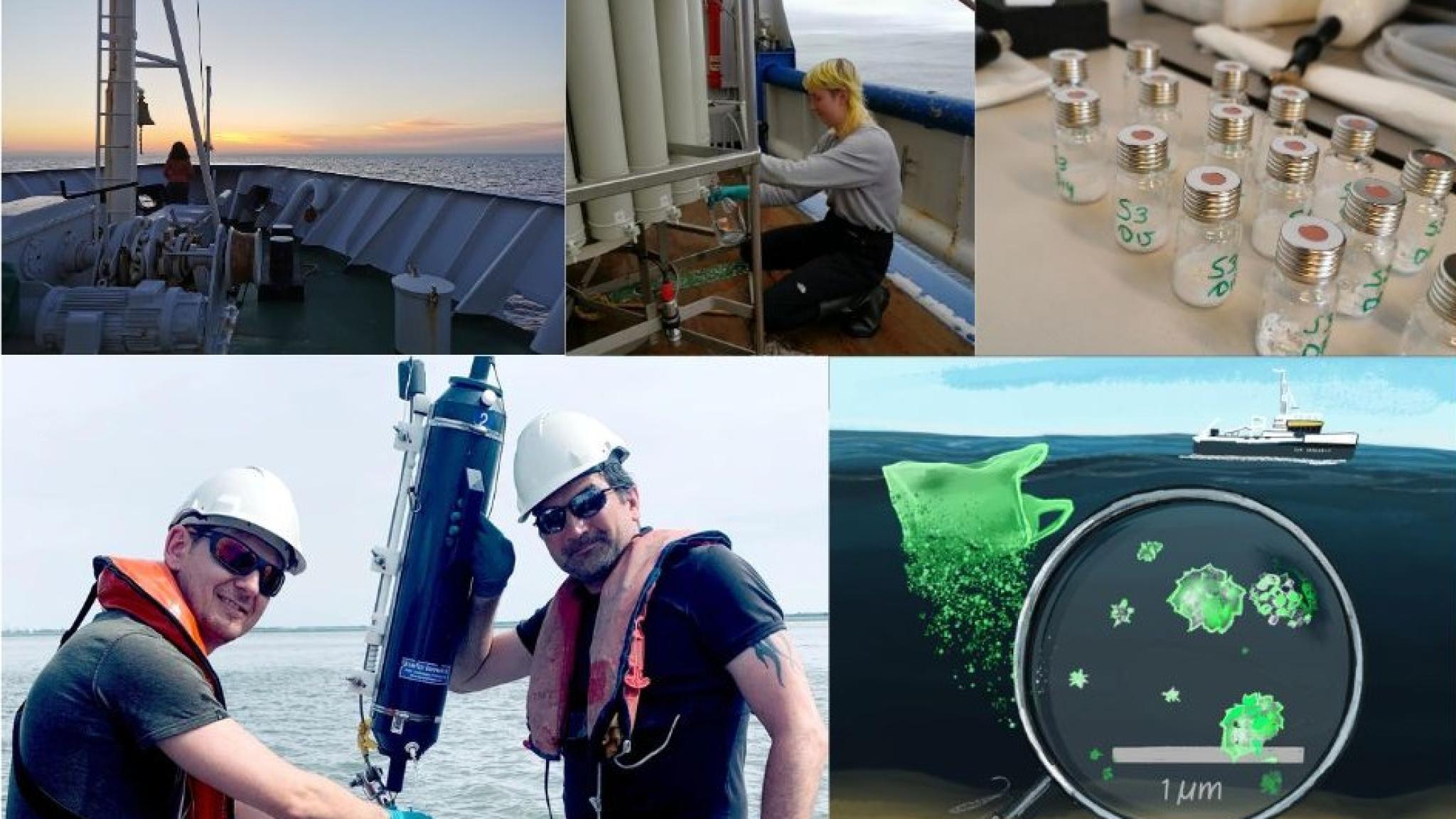Tremendous amount of plastic floats as nanoparticles in the ocean

The total amount of plastic floating in the North Atlantic Ocean as particles of less than 1 micrometer each is estimated at 27 million tons. This is shown by a comprehensive study by the Royal Netherlands Institute for Sea Research (NIOZ) and Utrecht University. The results were published 09 July 2025 in the scientific journal Nature.
“This estimate shows that there is more plastic in the form of nanoparticles floating in the this part of the ocean, than there is in larger micro- or macroplastics floating in the Atlantic or even all the world's oceans!”, said Helge Niemann, researcher at NIOZ and professor of geochemistry at Utrecht University. Mid-June, he received a grant of 3.5 million euros to conduct more research into nanoplastics in the sea and their fate.
Ocean expedition
For this research, Utrecht master student Sophie ten Hietbrink worked for four weeks aboard the research vessel RV Pelagia. On a trip from the Azores to the continental shelf of Europe, she took water samples at 12 locations where she filtered out anything larger than one micrometer. “By drying and heating the remaining material, we were able to measure the characteristic molecules of different types of plastics in the Utrecht laboratory, using mass spectrometry,” Ten Hietbrink says.
First real estimate
The research by NIOZ and Utrecht University provides the first estimate of the amount of nanoplastics in the oceans. Niemann: “There were a few publications that showed that there were nanoplastics in the ocean water, but until now no estimate of the amount could ever be made.” This first estimate was made possible, according to Niemann, by the joining of forces of ocean scientists and the knowledge of atmospheric scientist Dusân Materic of Utrecht University.
Shocking amount
Extrapolating the results from different locations to the whole of the North Atlantic Ocean, the researchers arrived at the immense amount of 27 million tons of nanoplastics. “A shocking amount,” Ten Hietbrink believes. “But with this we do have an important answer to the paradox of the missing plastic.” Until now, not all the plastic that was ever produced in the world could be recovered. So, it turns out that a large portion is now floating in the water as tiny particles.
Sun, rivers and rain
The nanoplastics can reach water by various routes. In part, this happens because larger particles disintegrate under the influence of sunlight. Another part probably flows along with river water. It also appears that nanoplastics reach the oceans through the air, as suspended particles fall down with rainwater or fall from the air onto the water surface as ‘dry deposition’.
Consequences
The consequences of all those nanoplastics in the water could be fundamental, Niemann emphasizes. “It is already known that nanoplastics can penetrate deep into our bodies. They are even found in brain tissue. Now that we know they are so ubiquitous in the oceans, it's also obvious that they penetrate the entire ecosystem; from bacteria and other microorganisms to fish and top predators like humans. How that pollution affects the ecosystem needs further investigation.”
Other oceans
In the future, Niemann and colleagues also want to do further research on, for example, the different types of plastics that have not yet been found in the fraction of 1 micrometer or smaller. “For example, we have not found polyethylene or polypropylene among the nanoplastics. It may well be that those were masked by other molecules in the study. We also want to know if nanoplastics are as abundant in the other oceans. It is to be feared that they do, but that remains to be proven.
Not cleaning up but preventing
Niemann emphasizes that the amount of nanoplastics in ocean water was an important missing piece of the puzzle, but now there is nothing to do about it. “The nanoplastics that are there, can never be cleaned up. So an important message from this research is that we should at least prevent the further pollution of our environment with plastics.”
About the authors
First authors of the publication are Sophie ten Hietbrink and Dušan Materić.
- Sophie ten Hietbrink was a student at Utrecht University at the time and now works as a PhD at the Department of Geological Sciences, Stockholm University. She did the sampling, formal analysis, lab work, data analysis and interpretation. She was supervised by Dušan Materić.
- Dušan Materić led the experimental design and analysis and developed the principal methodology. He is head of the research group Microplastics, Nanonplastics and Elements at the Department of Environmental Analytical Chemistry from Helmholtz Centre for Environmental Research, Leipzig, Germany. He is also affiliated with the Institute for Marine and Atmospheric Research Utrecht (IMAU), Utrecht University.
The other contributors, next to Helge Niemann from NIOZ who devised the project, acquired the funding and did fieldwork and sampling:
- Rupert Holzinger, IMAU: Formal analysis and lab work was performed in his lab.
- Sjoerd Groeskamp, NIOZ: Determination of the gyre extent and mixed-layer volume.